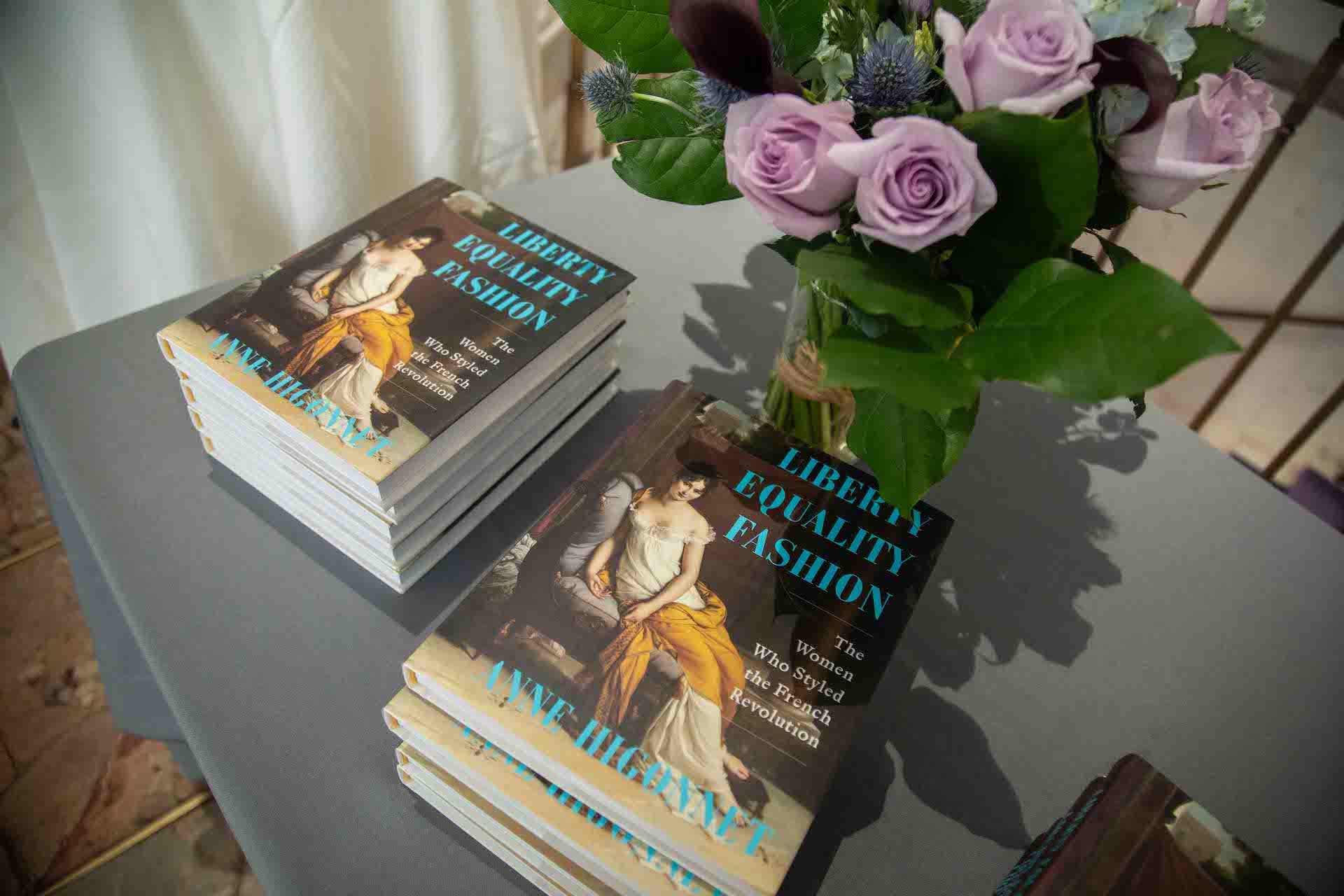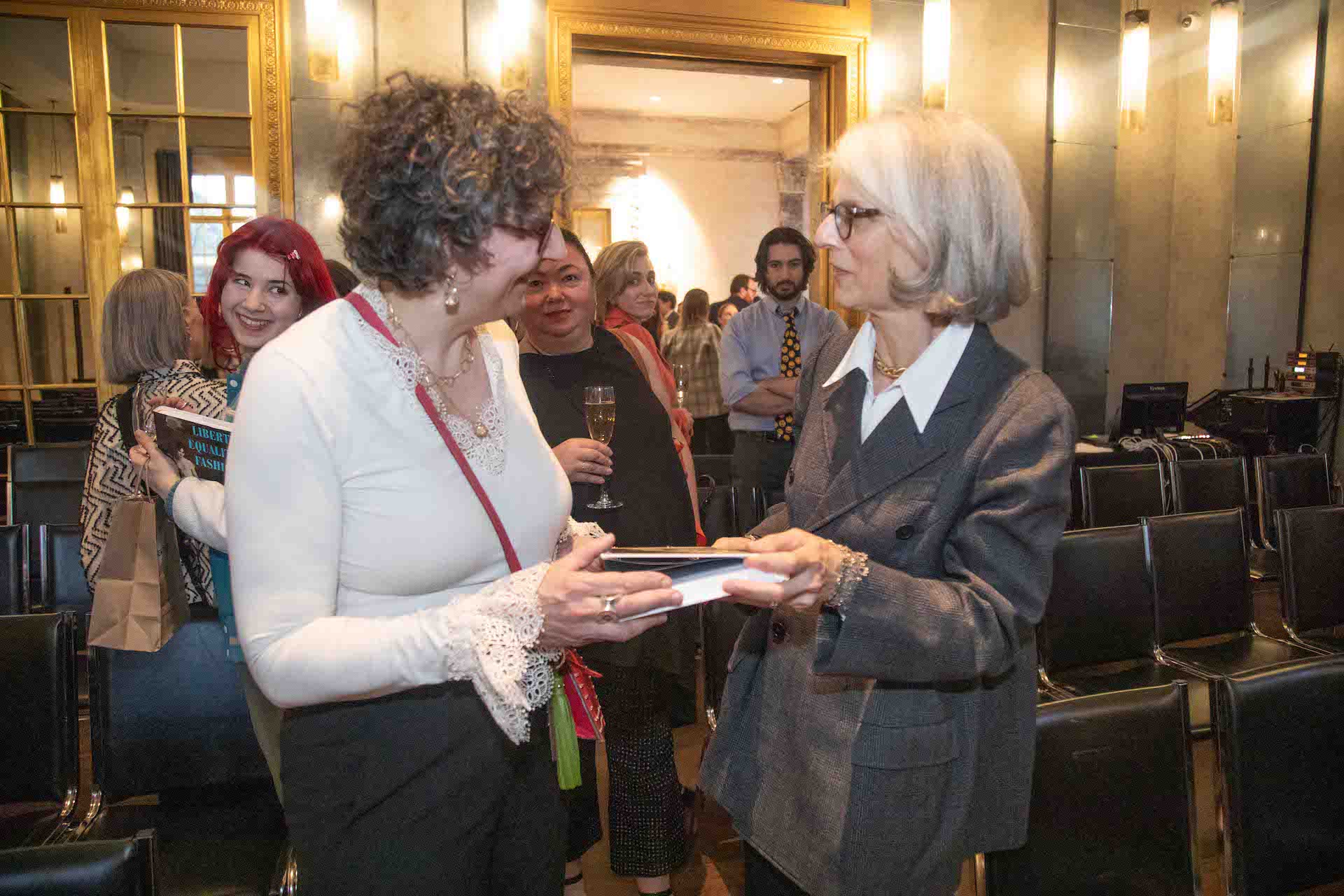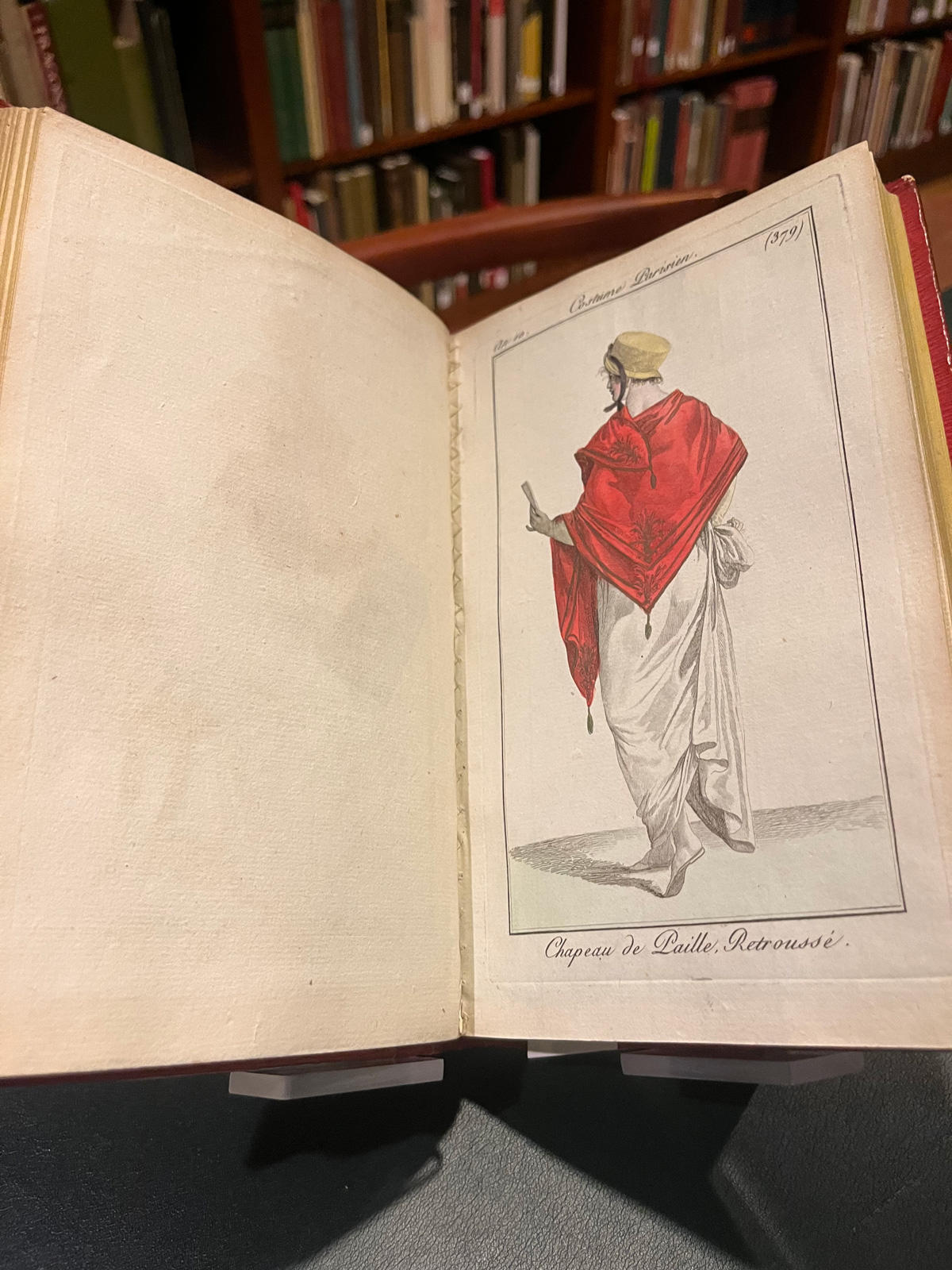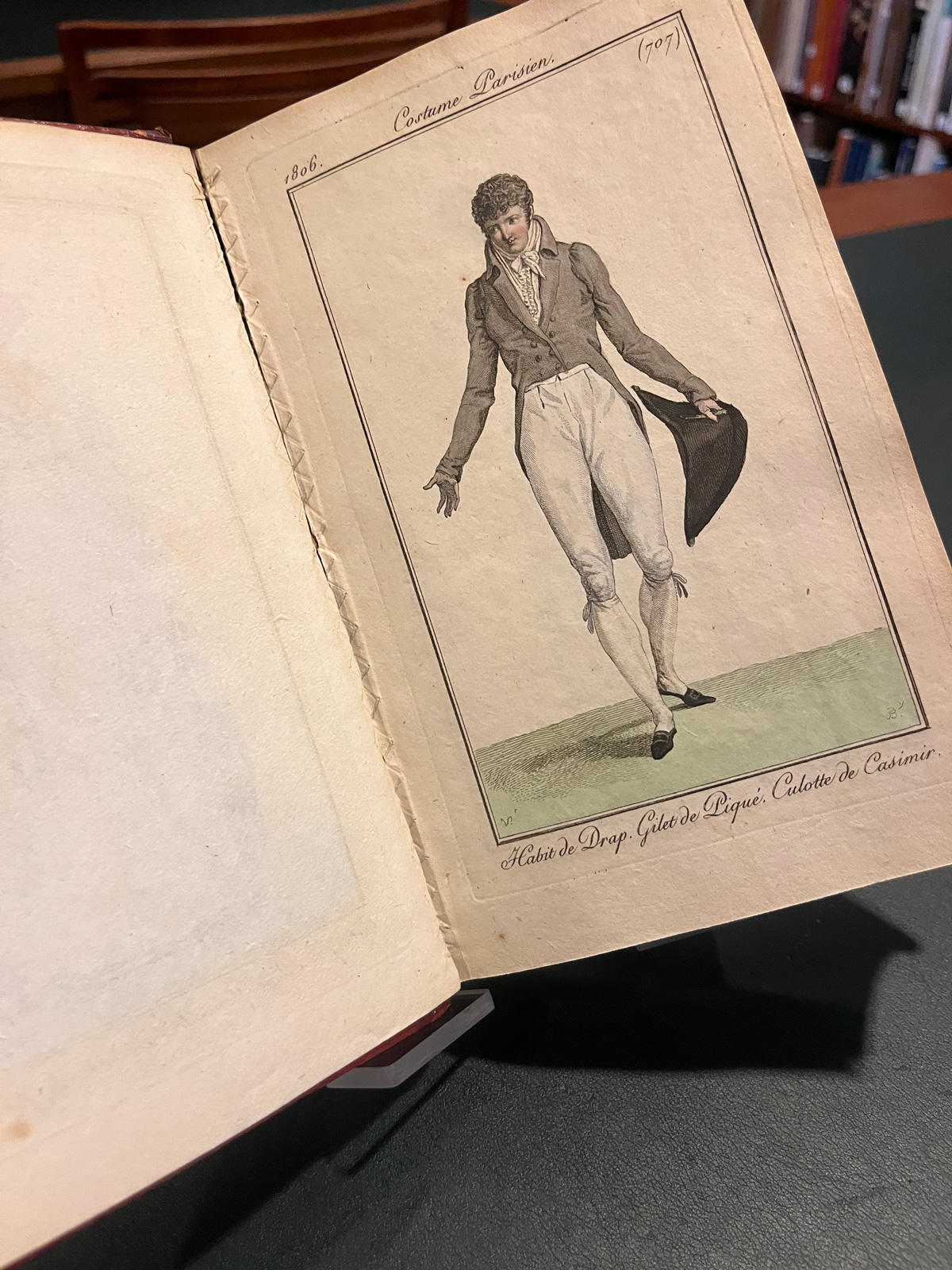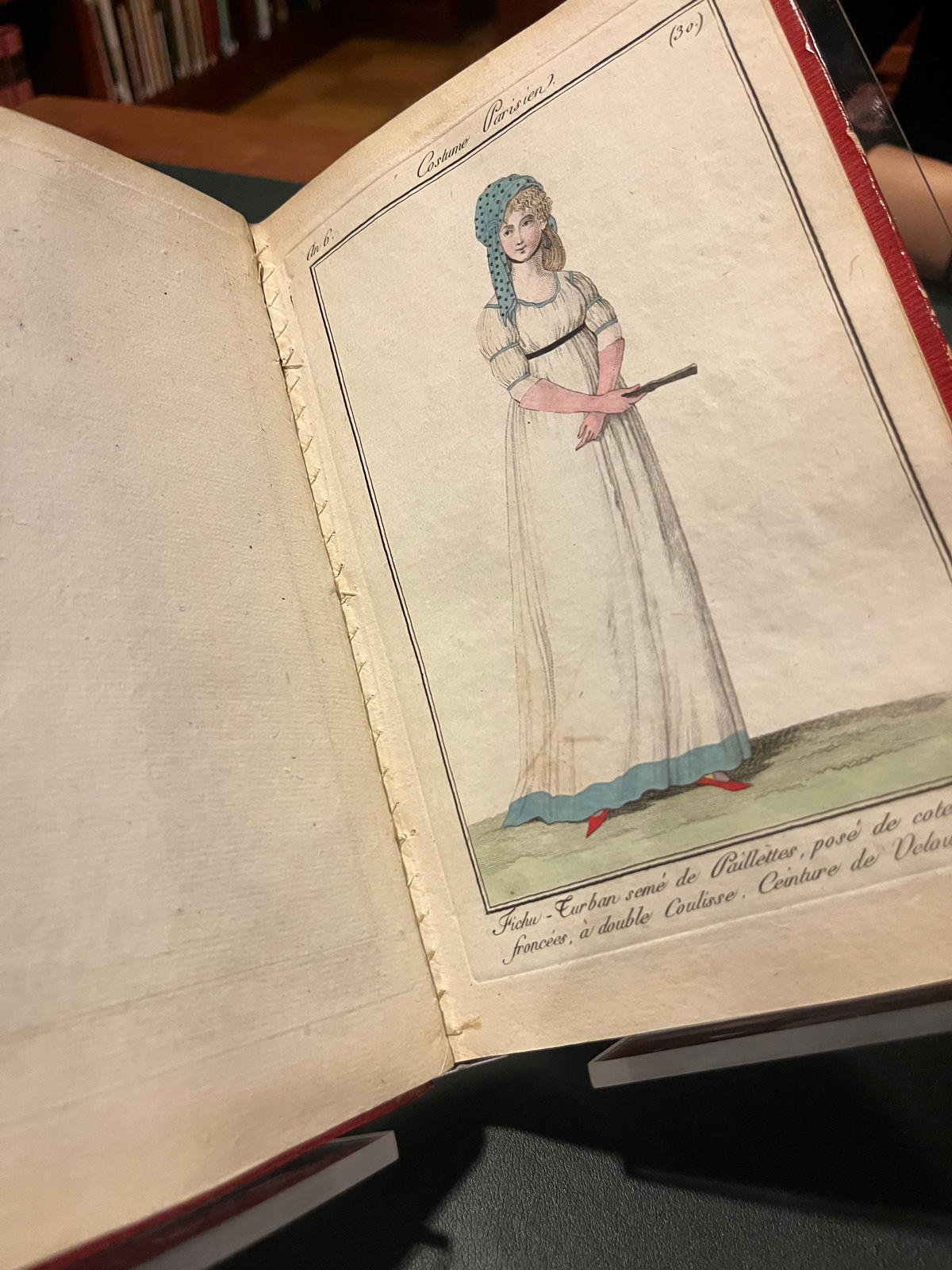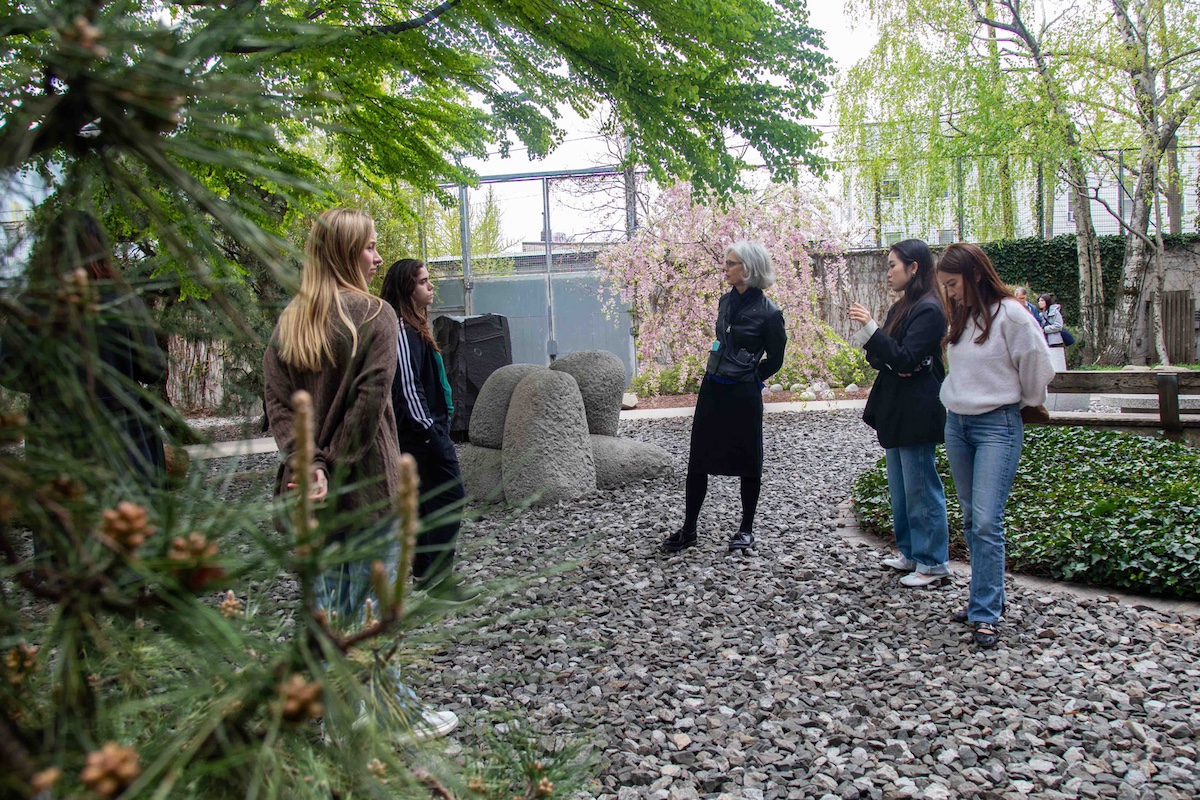Back when she was a graduate student at Yale planning her life trajectory, Anne Higonnet couldn’t have predicted that the study of clothing would become one of the defining pillars of her career. All she knew was that anything she put forth had to have its own unique spin — she even promised herself that she would never write the same kind of book twice. Her goal was, and has always been, to break the untold narratives of history.
“Someone’s got to contradict the stories of the past,” she said.
That’s exactly what she does in her new book, Liberty Equality Fashion: The Women Who Styled the French Revolution. Published on April 16, the book follows three French icons, Joséphine Bonaparte, Thérésa Tallien, and Juliette Récamier, and highlights the “forgotten fashion revolution” that they engineered amid the political and social upheaval of the French Revolution.
The book’s publication coincides with another honor: This past December, Higonnet was offered a named chair from an anonymous Barnard alumna in honor of Barbara Novak, one of the legendary art history teachers at Barnard.
“Not only was she a great teacher, but she was a strong woman who shaped the relationship between the Barnard and Columbia art history departments in a way that survives to this day,” said Higonnet, whose official title is now Barbara Novak Professor of Art History.
These two milestones have opened the door for the professor to tell more stories about exceptional women, very much in line with her personal mission — and Barnard’s.
This moment in Higonnet’s life and career seem inevitable in hindsight. In high school and college, she designed period-piece costumes for school plays. For one show, she even produced clothing from the era that serves as the backbone of her new book. Talk about full circle.
But what really set off what she calls a “swerve” in her career was a trip Higonnet took to New York City while enrolled in her Ph.D. program at Yale. It was during her visit, in the illustrious halls of the Metropolitan Museum of Art, that the historian stumbled on a work of art that would light an intellectual match that’s still burning today. The painting was Marie Joséphine Charlotte du Val d’Ognes by Marie Denise Villers. Something about the young woman at work in the glow of the window light stayed with the historian until she returned to New York City to start as a professor at 3009 Broadway.
“When I got the job at Barnard, there I was, and there it still was,” she said of the painting.
Higonnet penned a scholarly essay on the piece, and in keeping with the work of her fellow early 19th-century historians, she decided to consult Le Journal des Dames et des Modes — what she refers to as “the first modern fashion magazine.” With the help of a graduate student, Higonnet located pages from the first seven years of the magazine inside the Morgan Library & Museum, in the Murray Hill neighborhood of Manhattan.
After closely examining the small images, called plates, that captured the streetwear of the day, Higonnet realized that history had been unfair to the women of the Napoleonic era.
“I’d been taught that everyone had been taught, that this episode of fashion history was about scandalous, obscene excess,” said Higonnet. “I realized that was just a total myth that had been invented to conceal a period of tremendous feminine creativity and liberation.”
Higonnet got permission from the Morgan Library to create a website displaying the plates, and in 2020, she launched the popular Barnard course Clothing, which has attracted legions of students since it first became a virtual offering during the pandemic. The class’s universal appeal has allowed Higonnet to connect with Barnard students in a very foundational way — everyone can relate to waking up and choosing an outfit.
But she didn’t stop there. Around the same time she launched the Clothing course, Higonnet decided to write a book. It started as a chronological history of fashion during the French Revolution, but her editor suggested that a more compelling way to tell the story would be to build it around Bonaparte, Tallien, and Récamier, the leading trendsetters of the day.
As an academic, this style of writing was out of Higonnet’s comfort zone. But she reminded herself of the vow she took in her twenties to create original work and to tell untold stories. Her neighbor also had some words of encouragement: “She said to me, ‘I only take personalities with me to the beach.’”
Organizing the story this way gave Higonnet the perfect entry point to study fashion’s transformation from restrictive, heavy clothing to sleeker staples. Underwear cages, boned corsets, massive skirt trains, and petticoats were tossed aside and replaced with shift dresses and flat, laced-up shoes, freeing women of the excessive weight they had literally carried around for years. Handbags were pioneered as new repositories for belongings, in lieu of undergarment pocket skirts, and women sported cropped hairstyles for the first time. All of these new innovations allowed them to move freely and participate more meaningfully in the public domain.
“It was, in the most immediate physical way, a liberation of the female body,” said Higonnet.
The official book launch will take place on April 16 at the French bookstore Albertine in New York City. Higonnet will be joined by Caroline Weber, professor of French and comparative literature at Barnard, for the discussion. Interested parties who are unable to attend can still get a sneak peek of the book through two recent articles Higonnet penned for Vogue and Town and Country.
Now with the named chair as part of her official title, Higonnet feels she has a lot to live up to. But she’s happy to have such strong legacies — such as Novak — to challenge her to continue to excel.
“For me, the launch of the book, that’s the celebration of the chair,” said Higonnet.
